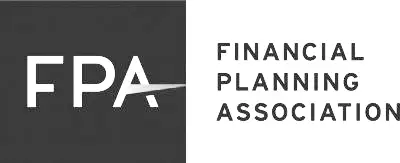Your child has selected a college, and now comes the fun part: figuring out how to pay for it.
As the four-year cost of college can range from $100,000 to $280,000 per child, parents must have a plan for how to fund their children’s higher education. It’s especially important because insufficient funds is a primary reason kids drop out of school.
First, a suggestion: Manage your children’s expectations by talking with them early on about what you can afford to pay for college. You don’t want your kids to spend years imagining a certain college that you know you can’t afford even with financial aid.
There are various sources of funding that can help you pay for your children’s education. Here we’ll look at two main ones: tax assistance and loans.
This post is also available via our podcast as Episode 18 on the Financial Symmetry website.
Tax assistance
Many families earn too much money to qualify for need-based financial aid, but they may be eligible for tax breaks.
The American Opportunity Tax Credit is a tax break available to help you pay for up to four years of undergraduate education for yourself or your dependents. As a tax credit, the AOTC gives you a dollar-for-dollar reduction in your total tax bill. In 2016, the credit could reduce your tax bill by up to $2,500 per student.
The credit consists of 100% of the first $2,000 of qualified education expenses — tuition, fees and course materials — and 25% on the next $2,000. However, the AOTC phases out at higher income levels — $160,000 to $180,000 for married couples filing jointly and $80,000 to $90,000 if the tax filer is single or head of household.
The Lifetime Learning Credit is geared toward paying for graduate school. It’s a $2,000 tax credit for $10,000 of expenses, but it has lower income limits than the AOTC credit — $55,000 for single filers and $110,000 for married couples filing jointly.
If your income is too high for tax credits, you may be able to give your child stock that has gained in value and eliminate up to $28,000 of capital gains by using a combination of the standard deduction, personal exemption and AOTC. It’s a complicated strategy, so I recommend working with a financial planner or tax advisor to implement it.
Loan options
If your family’s college savings and any available tax credits don’t reach far enough, your children could turn to student loans — but they should be cautious about taking on too much debt. According to the Institute for College Access and Success, the average college student had $28,950 of debt in 2014, a 56% increase over the past 10 years.
If loans become necessary, here are some options.
FEDERAL DIRECT SUBSIDIZED LOAN
After your student fills out the Free Application for Federal Student Aid, or FASFA, and demonstrates need, the U.S. Department of Education may offer a federal direct subsidized loan, also known as a Stafford loan. With this subsidized loan, which is available to undergraduates who demonstrate financial need, the government pays the interest while your student is in college. Since interest doesn’t accrue until after graduation, he or she can accept the loan and pay it off after graduation.
Loan limits are based on years in college — $3,500 in year one, $4,500 in year two and $5,500 for however many more years (subject to an aggregate loan limit) your student needs to earn an undergraduate degree.
FEDERAL DIRECT UNSUBSIDIZED LOAN
This unsubsidized version of the Stafford loan differs in a few key ways: It’s open to both undergraduates and graduate students, there is no requirement to demonstrate financial need, and your student will be charged interest while he or she is in college. The annual limit (combined with subsidized direct loan) on these loans is $5,500 in year one, $6,500 in year two, and $7,500 in year three and beyond. This loan may be an option for parents and students who can’t demonstrate financial need but nonetheless require assistance to pay for school.
» MORE: Pros and cons of student loan consolidation and refinancing
PARENT PLUS LOANS
Another option is Parent PLUS loans, which are federal loans that you can take out each year to cover the full cost of your child’s education. This can become a large additional debt burden, and payments could stretch well into your retirement years, so think carefully about whether this is the right option for you.
PRIVATE STUDENT LOANS
A variety of banks and other lenders offer private loans, which typically carry variable interest rates, origination fees and other charges. Almost all private loans require a co-signer.
Private loans lack the flexibility of federal loans, and generally their repayment and forgiveness options aren’t as advantageous. Therefore, your family should turn to private loans only after taking full advantage of other resources.
CONCLUSION
Other types of loans not discussed include a Home Equity Line of Credit (HELOC), 401k loans, family loans and life insurance policy cash value loan. Each of these has their pros/cons, but depends on your personal situation.
Furthermore, studies have shown that when students are at least partially responsible for paying their own college tend to do better academically than those who don’t. Therefore, don’t automatically incur all the debt yourself impacting your ability to retire.
It’s important to understand your family’s options, when to use what funds and how it affects your child’s overall financial aid eligibility. Working with a qualified fee-only financial planner can help you make smart decisions.
A version of this article was first posted on Nerdwallet.





